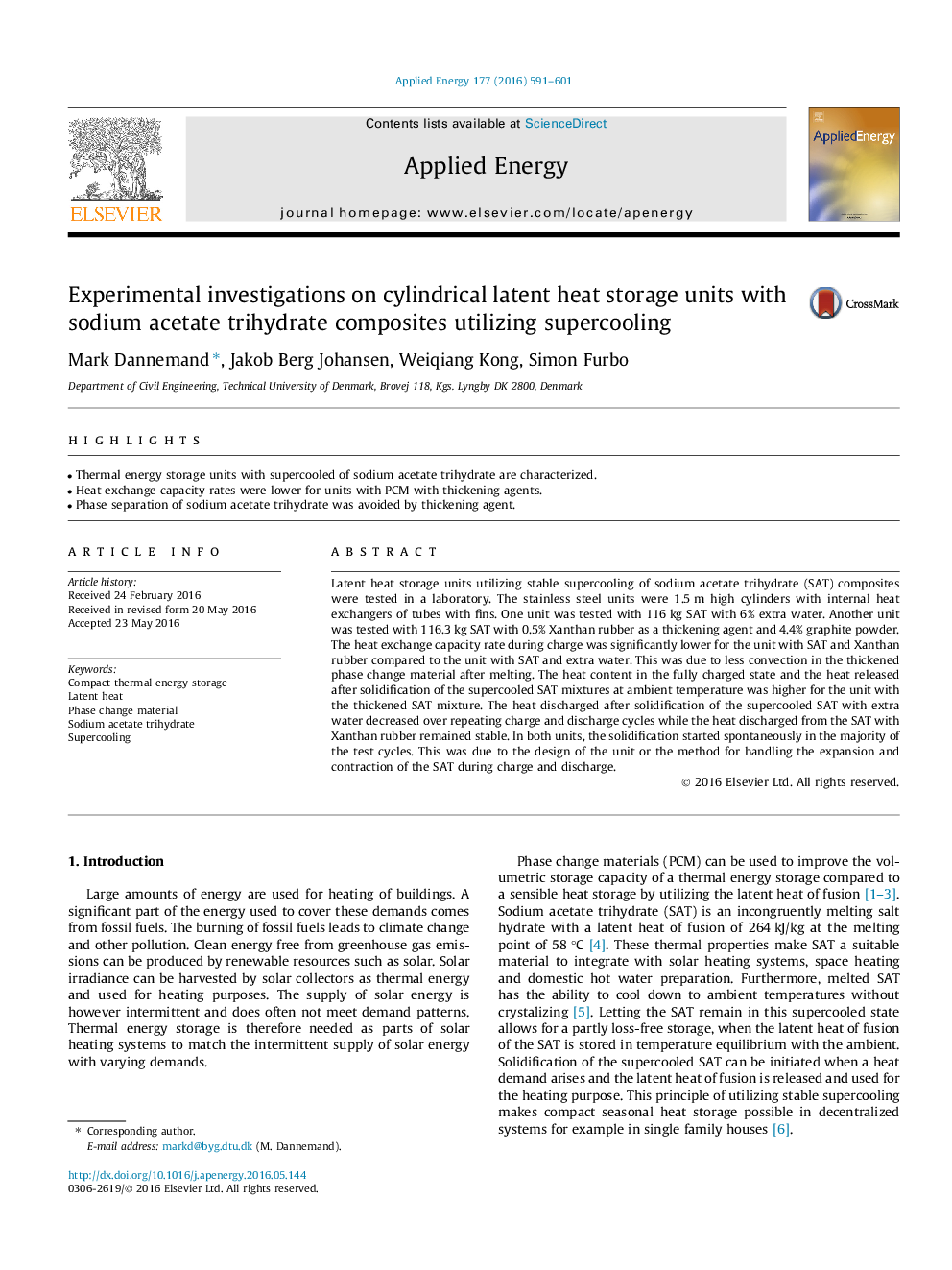| Article ID | Journal | Published Year | Pages | File Type |
|---|---|---|---|---|
| 6682770 | Applied Energy | 2016 | 11 Pages |
Abstract
Latent heat storage units utilizing stable supercooling of sodium acetate trihydrate (SAT) composites were tested in a laboratory. The stainless steel units were 1.5Â m high cylinders with internal heat exchangers of tubes with fins. One unit was tested with 116Â kg SAT with 6% extra water. Another unit was tested with 116.3Â kg SAT with 0.5% Xanthan rubber as a thickening agent and 4.4% graphite powder. The heat exchange capacity rate during charge was significantly lower for the unit with SAT and Xanthan rubber compared to the unit with SAT and extra water. This was due to less convection in the thickened phase change material after melting. The heat content in the fully charged state and the heat released after solidification of the supercooled SAT mixtures at ambient temperature was higher for the unit with the thickened SAT mixture. The heat discharged after solidification of the supercooled SAT with extra water decreased over repeating charge and discharge cycles while the heat discharged from the SAT with Xanthan rubber remained stable. In both units, the solidification started spontaneously in the majority of the test cycles. This was due to the design of the unit or the method for handling the expansion and contraction of the SAT during charge and discharge.
Related Topics
Physical Sciences and Engineering
Energy
Energy Engineering and Power Technology
Authors
Mark Dannemand, Jakob Berg Johansen, Weiqiang Kong, Simon Furbo,
